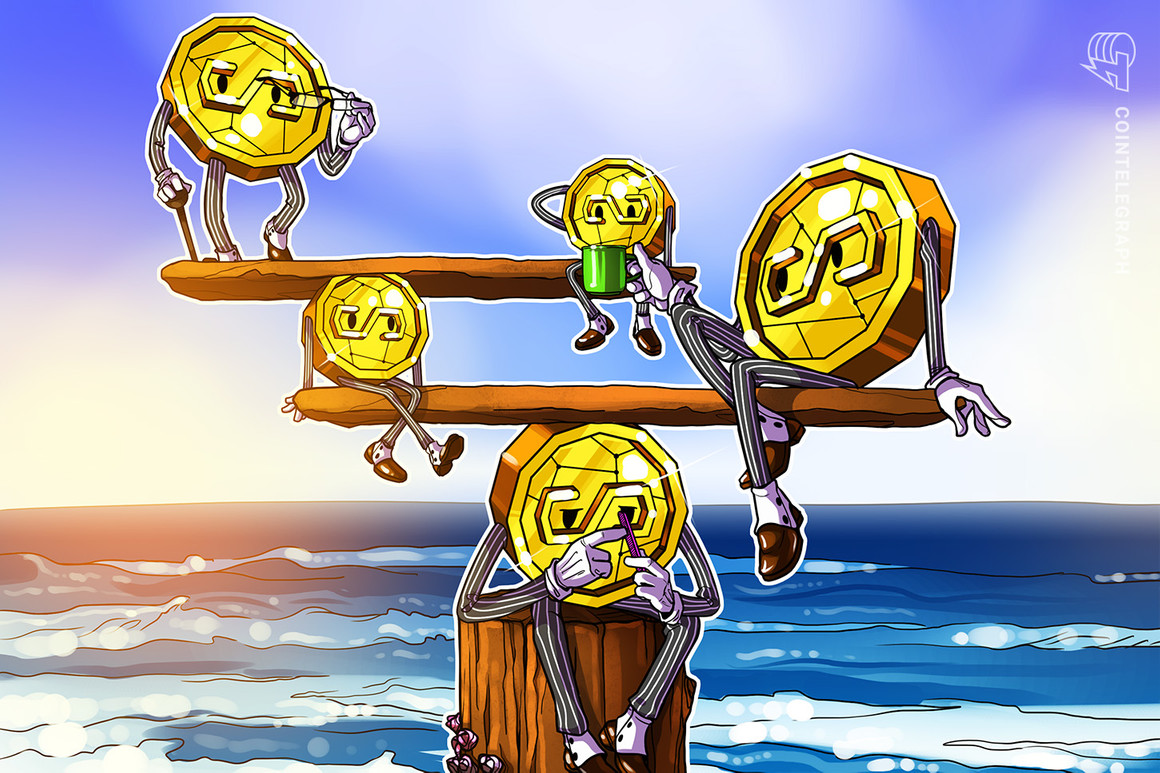If early November’s FTX collapse was crypto’s “Lehman moment” — as more than a few pundits have suggested — will the FTX contagion now spread to stabl

If early November’s FTX collapse was crypto’s “Lehman moment” — as more than a few pundits have suggested — will the FTX contagion now spread to stablecoins? After all, Tether (USDT), the market leader, briefly lost its United States dollar peg on Nov. 10. In normal times, this might have raised alarm bells.
But, these aren’t normal times.
In fact, in the days following FTX’s Nov. 11 bankruptcy filing, stablecoin “dominance,” i.e., the sector’s share of overall cryptocurrency market capitalization, increased to 18%, an all-time high. Bitcoin (BTC), Ether (ETH), and most altcoins appeared to be feeling the pain from crypto-exchange FTX’s implosion, but not stablecoins.
But, what awaits stablecoins in the longer term? Will they really emerge from the FTX fiasco unscathed, or is the sector due for a shake-out? Are stablecoins (still) too opaque, undercollateralized and unregulated for investors and regulators, as many insist?
The collapse of the Bahamas-based crypto-exchange FTX hit the crypto world like a tropical storm, and so it bears asking once again: How stable are stablecoins?
Is the contagion spreading?
“The cracks in the crypto eco-system are increasing, and it would not be surprising to see a significant de-pegging event” in the future, Arvin Abraham, a United Kingdom-based partner at law firm McDermott Will and Emery, told Cointelegraph. Particularly at risk are those stablecoins that use other cryptocurrencies for their asset reserves, rather than fiat currencies like the euro or U.S. dollar, he said.
“There is some evidence that FTX contagion did spread to stablecoins,” Ryan Clements, assistant professor at the University of Calgary Faculty of Law, told Cointelegraph, citing the brief USDT de-pegging event. “This shows how interconnected the crypto market is to it.”
On Nov. 10, Tether fell to $0.97 on Bitstamp and several other exchanges and to $0.93 for a few moments on Kraken. Tron’s USDD stablecoin also wobbled. Stablecoins are never supposed to fall below $1.00.
For its part, Tether blamed the depegging on crypto-exchange illiquidity. Relatively few crypto trading platforms are well capitalized, and sometimes “there is more demand for liquidity than exists on that exchange’s order books and has nothing to do with Tether’s ability to hold its peg nor the value or makeup of its reserves,” said the company.
“Tether is completely unexposed to Alameda Research or FTX,” the firm added in its Nov. 9 blog post, further noting that its tokens are “100% backed by our reserves, and the assets that are backing the reserves exceed the liabilities.”
Recent: Tokenized government bonds free up liquidity in traditional financial systems
“The one thing that has saved Tether so far is that people have generally sold their Tether to others and most users have not actually cashed out,” said Buvaneshwaran Venugopal, assistant professor in the department of finance at the University of Central Florida. “Tether had to pay about $700 million recently and was able to do so.”
That said, “the general lack of enthusiasm for crypto and the shrinking options for stablecoins may change this situation,” Venugopal told Cointelegraph. Tether has about $65 billion in circulation, according to CoinGecko, and U.S. Treasury bills make up over 58% of its reserves. “This is a large holding which would be affected if Tether has to sell under a crunch, especially in an increasing interest rate environment.”
A darkening outlook for algos?
What about algorithmic stablecoins, sometimes called algos? When TerraUSD Classic (USTC), an algorithmic stablecoin, collapsed in May, some forecasted that algos as a sub-class were doomed. Does the FTX failure dampen algos’ prospects?
“They aren’t dead, and there are still some prominent ones, including the DAI token which is essential for the functioning of MakerDAO,” said Abraham.
But, doubts remain, as algorithmic stablecoins are not easily understood and worries persist that “reserves can be adjusted on a dynamic basis potentially leading to manipulation and facilitating fraud,” said Abraham.
Uncollateralized, or substantially under-collateralized, stablecoins are inherently fragile, adds Clements. Terra’s unsuccessful attempt in May to partially collateralize USTC with BTC in defense of its peg is another example of the fragility of an uncollateralized or under-collateralized stablecoin model, he told Cointelegraph, adding:
“The industry seems to be accepting this fact and moving away from uncollateralized algorithmic stablecoin models.”
“I think algorithmic stablecoins are going to be the sacrificial lamb within the stablecoin regulatory space,” Rohan Grey, assistant professor at Willamette University College of Law, told Cointelegraph. “They’re the ones whose heads will be on the chopping block” in the U.S. to appease regulators and other nay-sayers. Algos might still survive on the global stage, though, he…
cointelegraph.com
